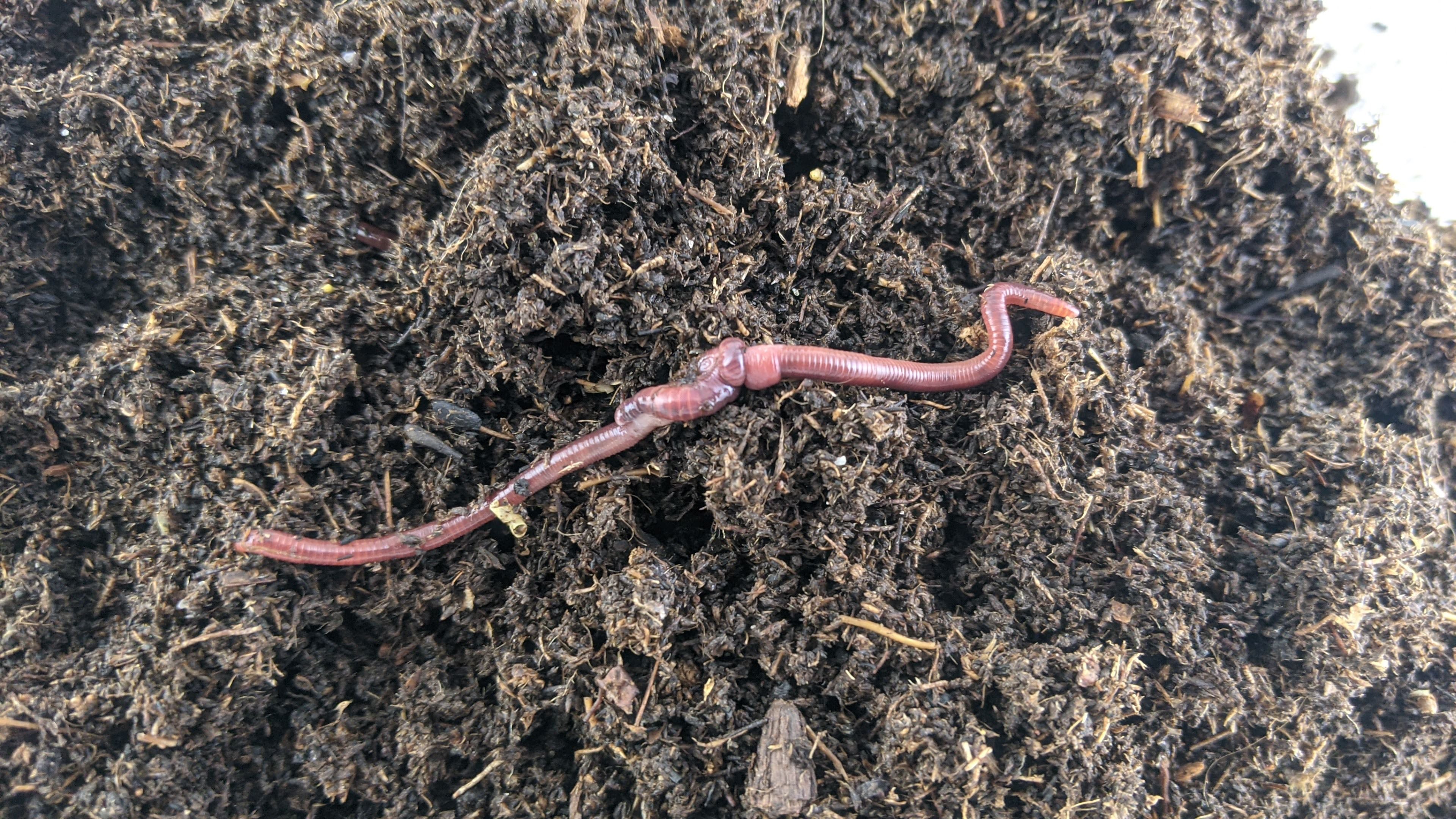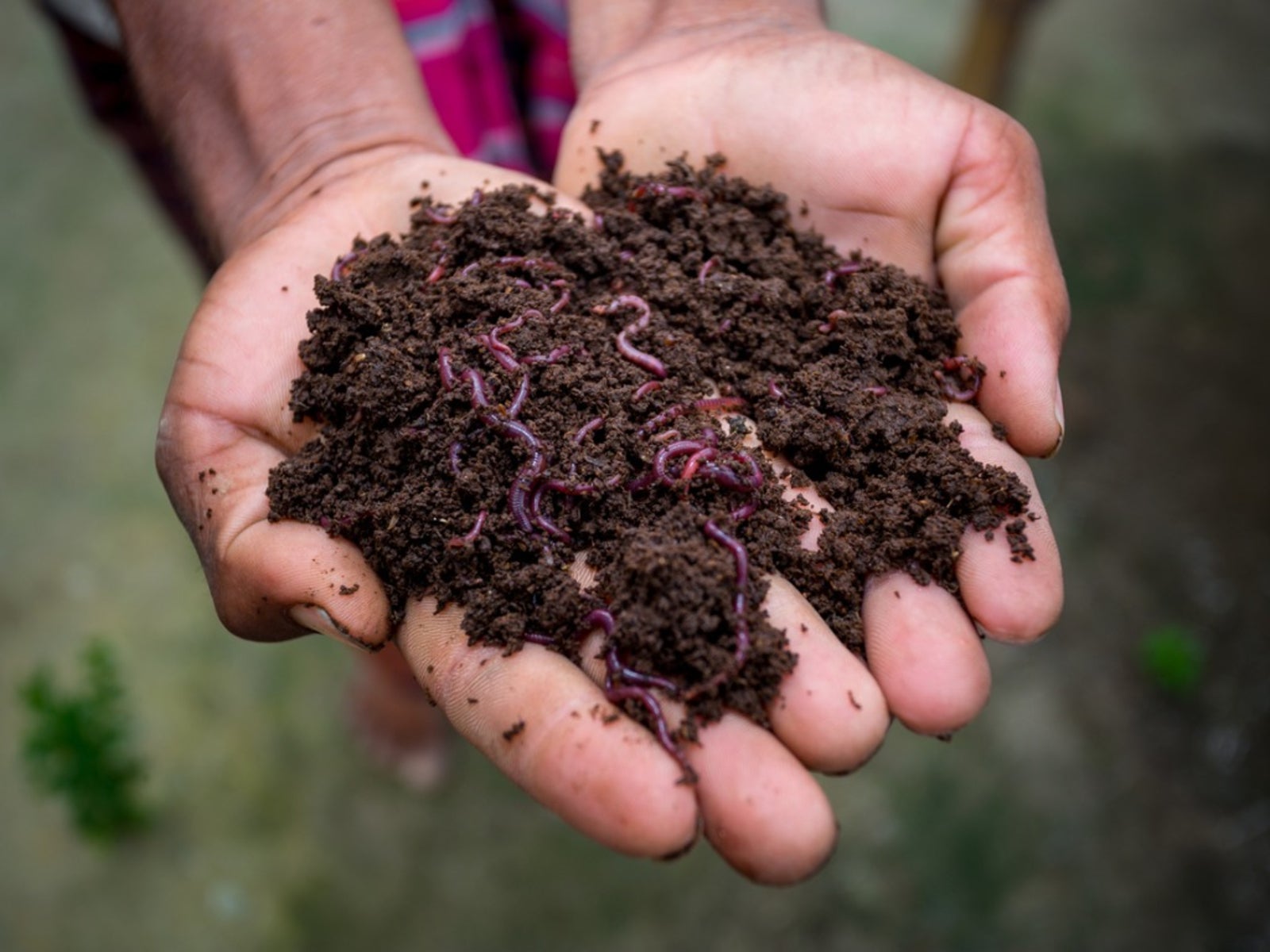Comprehending the Benefits of Red Wiggler Composting: Exactly How This Efficient Method Transforms Organic Waste Into Nutrient-Rich Dirt Changes
Red Wiggler composting, using the species Eisenia fetida, presents a compelling technique to natural waste management, converting kitchen area scraps and backyard particles right into valuable soil changes. This approach not just boosts dirt fertility yet also addresses pressing ecological concerns, consisting of garbage dump waste decrease and greenhouse gas discharges.
What Are Red Wigglers?
Red wigglers, clinically called Eisenia fetida, are a species of earthworm that play a pivotal role in vermicomposting systems. These worms are characterized by their reddish-brown color, fractional bodies, and an unique capacity to grow in organic-rich settings, making them ideal for composting applications - Red Wiggler Composting. Unlike their garden-dwelling counterparts, red wigglers prefer to populate the top layers of soil, where decomposing matter is plentiful
Normally measuring between 3 to 4 inches in size, red wigglers have a high reproductive price, allowing them to multiply swiftly under ideal problems. They possess a distinct digestive system that allows them to process natural waste effectively, converting it right into nutrient-rich spreadings, which are highly valuable for plant growth.
Their tolerance to differing wetness degrees and temperature level ranges further improves their utility in vermicomposting arrangements, making them a preferred selection amongst composting lovers. In addition, red wigglers are cardiovascular organisms, which requires a well-aerated composting environment, making certain effective decay. Understanding the organic characteristics and actions of red wigglers is necessary for optimizing their use in sustainable waste administration practices.

Advantages of Vermicomposting
Harnessing the power of vermicomposting deals a wide range of ecological and agricultural benefits. It significantly decreases natural waste in garbage dumps, thus decreasing methane emissions, a potent greenhouse gas. By diverting food scraps and lawn waste to vermicomposting, we sustain a more sustainable waste monitoring system.
In addition, vermicomposting enhances soil health. The castings generated by red wigglers are rich in necessary nutrients, germs, and enzymes, boosting dirt framework and fertility. This nutrient-rich amendment promotes robust plant growth and boosts water retention, lowering the demand for chemical plant foods.
In addition, vermicomposting fosters biodiversity in the dirt ecosystem. The introduction of useful bacteria from worm spreadings aids in illness suppression and nutrient cycling, creating a healthier atmosphere for plants.
Economically, vermicomposting decreases the costs connected with chemical inputs and waste disposal. Farmers and gardeners can grow high-quality produce at reduced expenditures, adding to food safety and sustainability.
Exactly How to Begin Composting
Starting a composting endeavor can be a gratifying and straightforward procedure. This will certainly help keep a balanced temperature, critical for the composting process.
Collect natural materials such as kitchen scraps, lawn waste, and shredded paper. Objective for a well balanced mix of 'eco-friendly' products, high in nitrogen (e.g., fruit scraps, coffee grounds), and 'brownish' materials, rich in carbon (e.g., dried leaves, cardboard) A proportion of approximately 2:1 eco-friendly to brown products is excellent.
Beginning layering your materials, making certain sufficient air flow by transforming the stack frequently. This advertises cardiovascular disintegration, decreasing smells and speeding up the procedure. Display moisture degrees; the compost must seem like a damp sponge yet not overly wet.
Nutrient Account of Vermicompost
Composting, specifically with red wigglers, generates a nutrient-rich item recognized as vermicompost. In addition, it gives trace elements like calcium, magnesium, and iron, fostering robust plant advancement and improving soil health.
The microbial activity existing in vermicompost additionally enhances its profile, presenting valuable microorganisms and fungi that promote nutrient schedule and uptake in plants. This organic element aids in suppressing plant diseases and boosting dirt structure, leading to boosted water retention and oygenation.

Environmental Effect of Composting
The ecological impact of composting, specifically through the usage of red wigglers, is profound and multifaceted. This method substantially reduces the quantity of natural waste sent out to garbage dumps, which consequently lessens greenhouse gas discharges, specifically methane-- a potent factor to environment change. By diverting natural products from garbage dumps, red wiggler composting not just aids reduce ecological destruction but likewise advertises lasting waste management methods.

Moreover, composting adds to carbon sequestration, as the procedure captures co2 from the ambience and stores it in the soil. browse around this site This natural procedure help in combating climate adjustment while improving the dirt - Red Wiggler Composting. On the whole, red wiggler composting offers a sensible, green remedy for waste monitoring and ecological sustainability, advertising much healthier ecological communities and an extra lasting future
Final Thought
In final thought, Red Wiggler composting offers as an effective approach for converting natural waste into beneficial dirt amendments. The procedure not only boosts soil fertility and framework but likewise reduces ecological problems linked with waste disposal.
Red Wiggler composting, utilizing the varieties Eisenia fetida, provides an engaging method to natural waste management, transforming cooking area scraps and yard particles right into valuable dirt amendments. Unlike their garden-dwelling counterparts, red wigglers favor to occupy the top layers of dirt, where decomposing issue is see here now bountiful.
The castings created by red wigglers are abundant in vital nutrients, germs, and enzymes, improving dirt framework and fertility. The nutrient-rich byproducts of red wiggler activity improve soil framework, rise water retention, and promote biodiversity within the soil ecological community.In conclusion, Red Wiggler composting serves as a reliable method for transforming visit this site right here natural waste into useful dirt modifications.